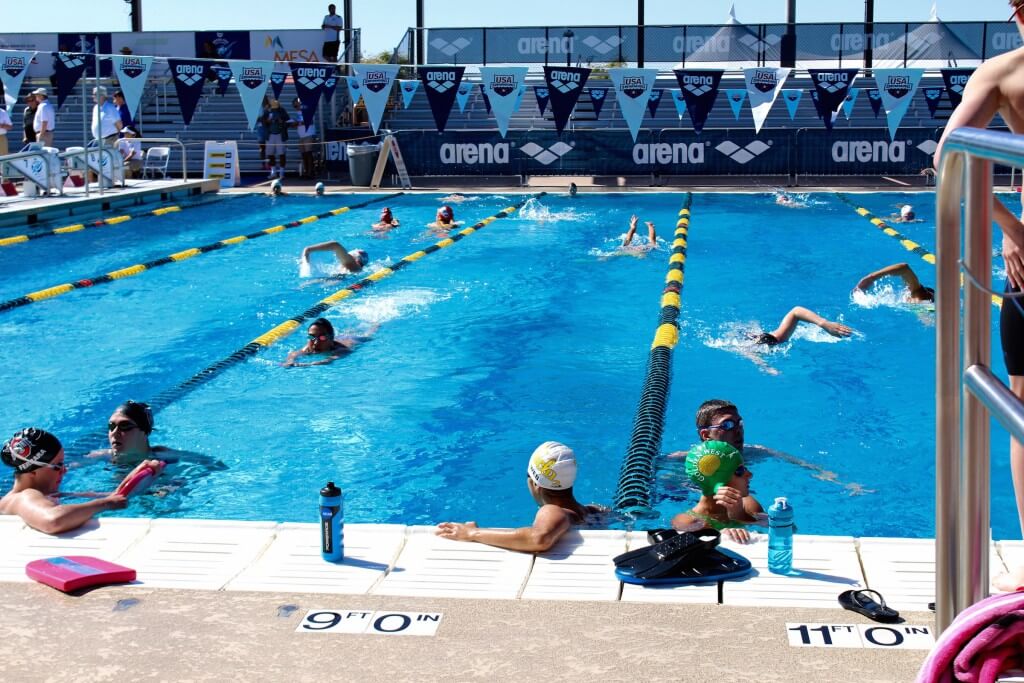Wellness Wednesday: The Role of Cooling Down in Recovery

Wellness Wednesday: The Role of Cooling Down in Recovery
With the long course season in full swing and the World Championships in Singapore on the horizon, swim meets are at the forefront of most swimmers’ minds. Preparing for competition takes more than just time in the pool. It involves intense training, a well-planned taper, quality sleep and proper nutrition.
But how do swimmers take care of their bodies during a meet? Cooling down after races has long been considered essential, yet some recent research questions whether it’s as necessary as once believed.
The Scientific Side
Cooling down is a key component of both training and competition, commonly credited with reducing lactic acid buildup and lowering an athlete’s heart rate after high-intensity activity. According to an article published in the Journal of Advances in Sports and Physical Education, cooling down offers several benefits for athletes. It improves blood circulation, normalizes body temperature, and speeds up respiratory recovery. Additionally, athletes who consistently cool down report feeling more relaxed, partly because the time dedicated to cooling down gave them the opportunity to reflect on their performance. These benefits can have a lasting impact, contributing to better sleep and a prolonged positive mental state.
New Research
A 2018 review published by the National Library of Medicine presented evidence that cooling down may not be as beneficial as once thought. Researchers concluded that active cool-downs were “largely ineffective…to enhancing same-day and next-day(s) sport performance” and did not appear to significantly prevent injuries. While active recovery did help reduce lactate in the blood, it didn’t have the same effect on the actual muscle tissue. Overall, the review found active cool-downs to be “largely ineffective for improving most psychophysiological markers of post-exercise recovery.”
One study cited in the review tested this by comparing athletic performance with and without active recovery. Researchers had athletes complete an initial workout, followed by a second session at least four hours later. They then compared their performance depending on whether they had used active recovery after their first workout. Results showed little to no difference in anaerobic performance when the time between efforts exceeded four hours – similar to the gap between prelims and finals or training sessions in swimming.
However, active recovery was found to be beneficial when the time between exercises was shorter, around 10 to 20 minutes, similar to the gap between back-to-back events. That said, this study focused on youth soccer, and the review acknowledged a lack of comparable research in other sports.
The review also addressed next-day performance, reporting conflicting results from research but generally finding only “trivial effects or small decreases” in performance. Researchers suggested that combining active and passive recovery methods may be most effective, though most studies examined them separately.
Personal Opinions
As tempting as it may be to use these findings as an excuse to skip the cool down, it still plays an important role on race day. I get it – the crowded, usually undersized warm-down pool packed with 15 swimmers per lane doing all kinds of strokes and speeds is probably the last thing you want to be fighting with after a tough race. But even if it might not be essential for your body, cooling down is still a valuable reset for several reasons.
While some research questions the physical benefits of cool downs, studies still support their role in lowering heart rate and flushing lactic acid from the bloodstream. In multi-day meets, that recovery can make a major difference. The same goes for long weeks of intense training.
Regardless, there’s no significant downside to cooling down. The physical and mental benefits make cooling down a worthwhile and necessary part of a swimmer’s routine. Whether it’s calming the body’s nervous system, giving you time to reflect on your race or touching up on your technique, the cool-down remains an important step that can make a difference over the course of a meet or season.



